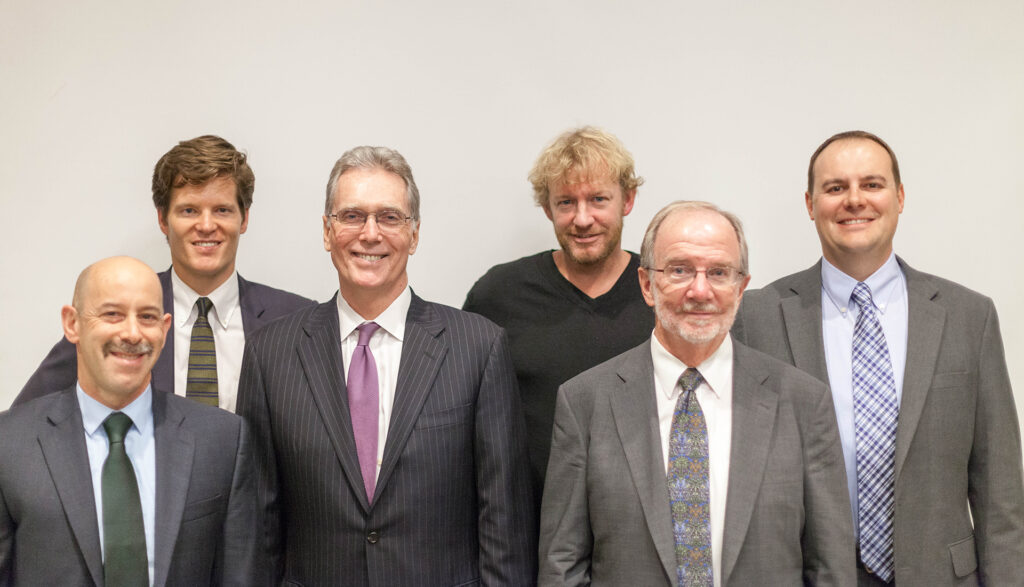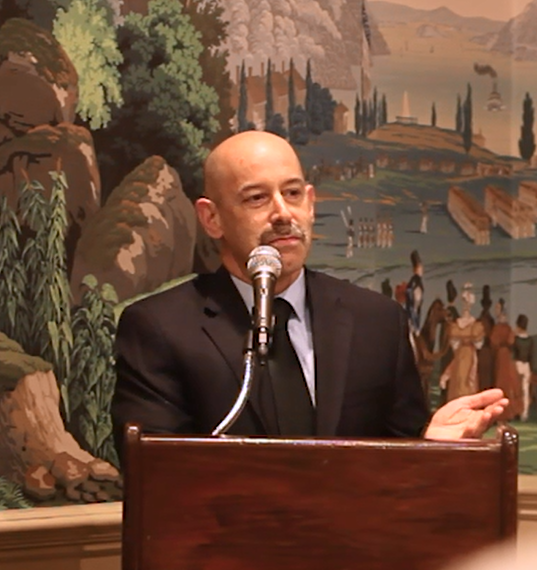On opening night of Climate Week New York City 2015, panelists at the “Sustainable Development Benefits of Building with Wood” event looked to our nation’s forests for innovative climate solutions. Organized by New England Forestry Foundation, Global Institute of Sustainable Forestry at the Yale School of Forestry & Environmental Studies, and Sustainability Practice Network, the panel considered how wood construction could play a revolutionary role in reducing the extent of future climate change.
The event took place in September as part of the seventh annual Climate Week which is organized by the international non-profit The Climate Group. The Climate Group aims to undertake climate change issues and global greenhouse gas emissions through solutions compatible with economic growth. Over 100 events encouraging climate change discussion, awareness, and action were hosted by community groups, universities, NGOs, and companies from around the world during Climate Week.

(From left to right: Frank Lowenstein, Patrick Holmes, Michael Deane, Michael Green, Dr. Chad Oliver, Bill Parsons. Not pictured: Roger Platt)
The panel consisted of six diverse and accomplished experts in architecture, green building engineering, and forest conservation. The panel included Michael Green (Michael Green Architecture), Patrick Holmes (USDA), Frank Lowenstein (New England Forestry Foundation), Dr. Chad Oliver (Yale University), Bill Parsons (WoodWorks), and Roger Platt (U.S. Green Building Council). Michael Deane (Turner Construction Company) moderated the panel event.
The open-dialog discussion began with Vancouver-based architect Michael Green who is known for his designs of wooden skyscrapers. In his opening statement, Green began by showing a rendering of the 102-story tall Empire State Building made of steel cables surrounded by wood panels. Speaking passionately to the crowd, Green said, “We have to shift society’s perception of what’s possible because we haven’t seen a new way to build a skyscraper before this in the past 100 years. It’s tough to change the construction industry, but it’s happening.”

(Michael Green addressing the crowd about tall timber buildings. Photo credit: NEFF)
Proceeding Green was NEFF’s own Deputy Director Frank Lowenstein who highlighted the economic and environmental aspects of increased use of wood in buildings along with the benefits of active forest management. Lowenstein proposed a radical idea to maximize the carbon benefits of forests by harvesting them in a sustainable way, improve their health while doing so, and to store that wood carbon in long-lasting buildings as much as possible.
Dr. Chad Oliver, Director of Yale’s Global Institute of Sustainable Forestry, then continued the conversation on forest management. He discussed the carbon emission benefits of avoiding steel and concrete, along with how to protect the biodiversity of forest ecosystems.

(Frank Lowenstein presenting on sustainable forestry. Photo credit: NEFF)
Patrick Holmes, Senior Advisor to the Under Secretary at the U.S.D.A., followed Oliver. He highlighted the recent announcement of the winners for the 2015 Tall Wood Building competition, a mixed-use building in Portland, Oregon and a residential condominium in New York City. Emphasizing the importance of a forest products market, Holmes argued that building with wood combats economic challenges through innovation.
National Director of WoodWorks, Bill Parsons, reviewed current building codes allowing for wood buildings in U.S. He mentioned that creating mid-rise wood buildings is well within code and that, “There are lots of applications that don’t require you to build the biggest building you can imagine.”
Roger Platt, President of the U.S. Green Building Council, concluded the panelist presentations with talk about LEED certifications and life-cycle analysis of building materials. He discussed issues with sourcing materials long distances away from the site and the significance of regulation during manufacturing.
After opening the floor for questions from the audience, the panel further discussed sustainable forestry, land protection, and energy efficiency of buildings.
Watch all of the presentations from the event on our video section!
